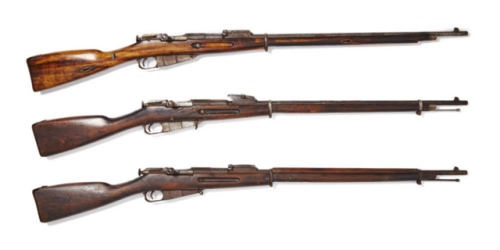The Easter Uprising and 20,000 Russian Rifles,During World War I Germany and Irish Republicans were
The Easter Uprising and 20,000 Russian Rifles,During World War I Germany and Irish Republicans were allies as it was in Germany’s best interest to destabilize the British Empire in any way possible, and or course the Irish Rebels needed weapons and supplies. In 1916 the German government offered support for the Easter Uprising, a planned rebellion to take place in Dublin on April 24th. On April 9th, 1916 the SS Libau (disguised as the Norwegian merchant ship SS Aud) disembarked from the port of Lubeck, steaming around Denmark and Norway, sneaking past the British blockade, then looping around the North Atlantic before steaming south and secretly delivering it’s cargo at an Irish port. The cargo carried by the SS Libau consisted of 20,000 Russian Mosin Nagant Model 1891 bolt action rifles along with 4 million rounds of ammunition. The rifles had been captured by the German Army on the Eastern Front, and since they did not share common caliber with standard German infantry firearms, was used as a second line rifle, or supplied to Central Power nations and other allies. In addition to the rifles were ten machine guns and explosives.The SS Libau was able to reach the Irish coast, however it was discovered by three British destroyers who were suspicious of an unexpected visit by a “Norwegian merchant ship”. Once in Cork harbor the crew scuttled the ship, sending it to the bottom of Cork harbor on April 16th, a mere weak before the Easter Rising. A number of Mosin Nagant rifles were salvaged by Royal Navy divers, and today there are dozens of examples on display in museums across Ireland and the UK. The rifles pictured above are on display at the National Museum of Ireland, the rifle pictured below is part of the Royal Collection Trust. -- source link
#history#mosin nagant#wwi#easter rising#rifles#guns#firearms


